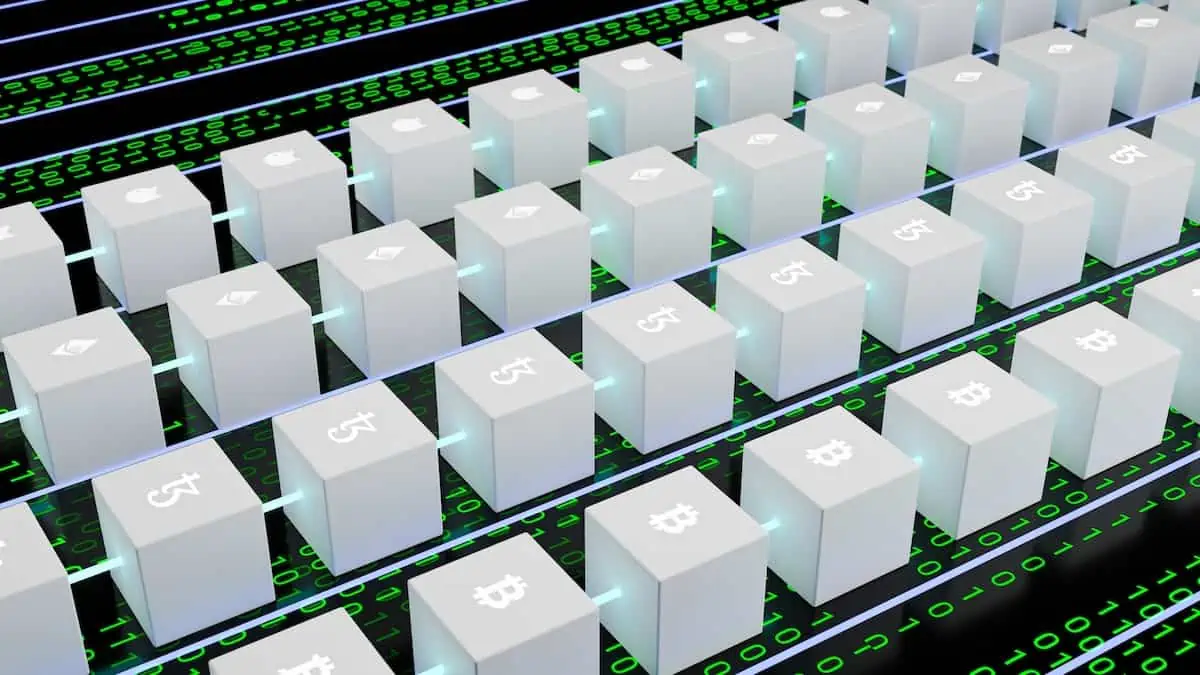Blockchain technology has emerged as one of the most transformative innovations of the digital age. Its applications span various industries, from finance to supply chain management, healthcare, and even government services.
As the demand for blockchain expertise continues to grow, it’s essential for individuals to embark on a structured learning journey to build their blockchain proficiency.
In this article, we will guide you through the essential steps to become proficient in blockchain.
Besides learning about blockchain, do pay some attention to investment education as well. FBC Edge can help you to start with education right away.
Understanding Blockchain Fundamentals
What is blockchain technology?
At its core, blockchain is a decentralized digital ledger that records transactions across multiple computers in a tamper-resistant way. These transactions are grouped into blocks, linked together in chronological order, forming a chain of blocks, hence the name “blockchain.”
How does blockchain work?
Blockchain operates on a peer-to-peer network, where each participant (node) stores a copy of the ledger. Transactions are validated through consensus mechanisms, such as Proof of Work (PoW) or Proof of Stake (PoS), ensuring the integrity of the ledger.
Key components of a blockchain system
- Cryptographic hashes: Used to secure data within blocks and link them together.
- Decentralization: No single entity has control over the network, enhancing security.
- Smart contracts: Self-executing contracts with predefined rules and outcomes.
- Immutable ledger: Once a transaction is added, it cannot be altered or deleted.
Importance of decentralized ledger technology
Decentralization eliminates the need for intermediaries, reducing costs and enhancing trust in various applications, from financial transactions to supply chain tracking.
Types of Blockchains
Public vs. Private blockchains
Public blockchains, like Bitcoin and Ethereum, are open to anyone, while private blockchains restrict access to authorized participants. Public blockchains prioritize transparency, while private ones emphasize privacy and control.
Permissioned vs. Permissionless blockchains
Permissioned blockchains require users to have explicit permission to participate, making them suitable for enterprise solutions. Permissionless blockchains, on the other hand, allow anyone to join, emphasizing openness and accessibility.
Hybrid blockchains and their applications
Hybrid blockchains combine elements of both public and private blockchains, providing flexibility and tailored solutions for specific use cases.
Choosing the right blockchain for your goals
Selecting the appropriate blockchain depends on your project’s requirements. Consider factors like security, scalability, decentralization, and consensus mechanisms.
Building a Solid Foundation
Learning the basics of cryptography
Cryptography is the foundation of blockchain security. Understand cryptographic techniques like hashing, digital signatures, and encryption, which safeguard data within the blockchain.
Exploring consensus mechanisms
Different blockchains employ various consensus mechanisms. Learn how PoW, PoS, Delegated Proof of Stake (DPoS), and others work, and their respective advantages and disadvantages.
Understanding smart contracts
Smart contracts are self-executing agreements with predefined conditions. Study programming languages like Solidity for Ethereum to create and deploy smart contracts.
Getting familiar with blockchain networks
Explore popular blockchain networks, like Bitcoin, Ethereum, and Binance Smart Chain. Set up your own node to gain hands-on experience and understand network operations.
Blockchain Development Tools and Languages
Overview of popular blockchain development platforms
Familiarize yourself with platforms like Ethereum, Hyperledger Fabric, and Polkadot, each offering unique features and capabilities.
Programming languages for blockchain development
Languages like Solidity, Rust, and Go are commonly used for blockchain development. Learn the syntax and best practices for your chosen platform.
Hands-on exercises and coding examples
Practice is key to proficiency. Develop simple smart contracts, create token standards, and deploy them on test networks to gain practical experience.
Exploring Use Cases and Applications
Blockchain in finance and cryptocurrencies
Understand the transformative potential of blockchain in the financial industry, including digital currencies, decentralized finance (DeFi), and remittances.
Supply chain and logistics applications
Learn how blockchain enhances transparency, traceability, and accountability in supply chain management, reducing fraud and inefficiencies.
Healthcare, identity verification, and data privacy
Explore blockchain’s role in securing healthcare records, verifying identities, and ensuring data privacy in an increasingly digital world.
Government and voting systems
Discover how blockchain can improve government services, enhance election transparency, and reduce fraud in voting systems.
Real-world blockchain success stories
Examine case studies of companies and projects that have leveraged blockchain technology to solve real-world problems, gaining insights into practical applications.
Advanced Blockchain Concepts
Scaling solutions and interoperability
Delve into solutions like sharding, sidechains, and cross-chain interoperability to address blockchain scalability issues.
Security challenges and solutions
Learn about common security threats, including 51% attacks and smart contract vulnerabilities, and how to mitigate them.
Governance and decentralized autonomous organizations (DAOs)
Explore governance models and the concept of DAOs, where decisions are made through code and voting mechanisms.
Future trends and emerging technologies in blockchain
Stay up-to-date with the latest advancements, such as blockchain integration with IoT, artificial intelligence, and the rise of Web3.
Building Your Blockchain Proficiency
Setting up a personal blockchain project
Apply your knowledge to create a blockchain project that aligns with your interests or addresses a specific problem.
Collaborating with blockchain communities
Engage with the blockchain community through forums, conferences, and open-source contributions to expand your network and knowledge.
Continuous learning and staying updated
Blockchain is a rapidly evolving field. Commit to continuous learning by following industry news, attending workshops, and participating in online courses.
Seeking career opportunities in blockchain technology
Explore job opportunities in blockchain development, consulting, research, and more, as the demand for blockchain expertise continues to grow.
Conclusion
In conclusion, building proficiency in blockchain technology is a rewarding journey that can open doors to exciting career opportunities and empower you to contribute to groundbreaking innovations.
By mastering the fundamentals, exploring use cases, and staying updated on emerging trends, you can become a valuable asset in the world of blockchain, driving positive change and shaping the future of decentralized technologies. Start your journey today and unlock the potential of blockchain proficiency.
Blockchain Proficiency article and permission to publish here provided by Jean Nichols. Originally written for Supply Chain Game Changer and published on January 12, 2024.
Cover photo by Shubham Dhage on Unsplash.

